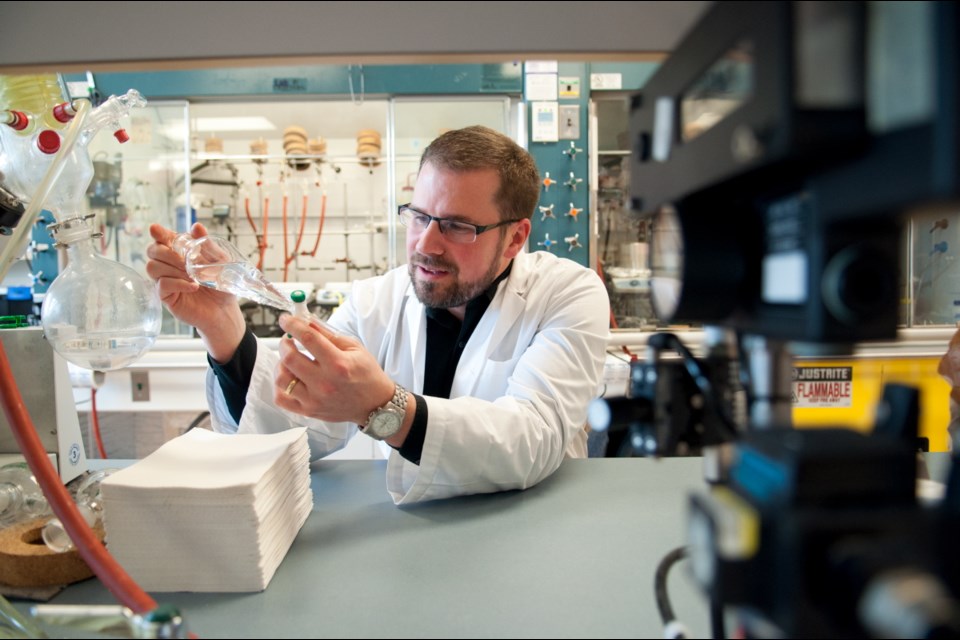To stay one step ahead of seasonal or pandemic flu viruses, we need to make better drugs and more of them, says synthetic chemist Jeremy Wulff.
The University of Victoria chemistry professor says the first line of defence against influenza is the flu vaccine and good hygiene.
For those who get sick, there are effective drugs to prevent or treat it — but they won’t last forever.
“If you make a good enough drug, sooner or later, the organism will find a way to evolve against it, so we just need to make better drugs and more of them,” Wulff said.
Wulff is speaking today at 2:30 p.m. as part of IdeaFest, a two-week symposium on now at UVic until March 15.
In his talk, The Microbial Arms Race: How Drug Resistance Happens in Influenza and What to Do About It, Wulff will address the genetic mechanisms that underpin drug resistance in influenza and how the organism evolves in response to the medicines we throw at it.
“Selective pressure,” for example, kills off a high percentage of virus strains but leaves a niche for the few untargeted viral strains to evolve more rapidly and overtake the former strain.
“It just means we have to anticipate these things and we have to be sure we’ve got other antiviral agents ready to go in the event of an emergency,” Wulff said.
Most healthy people who get the seasonal flu will fall ill for about two weeks but will not need medical care or antiviral drugs.
However, between 2,000 and 8,000 Canadians die of influenza and its complications each year, depending on the severity of the season, according to the Public Health Agency of Canada. Around the globe, the flu kills about 500,000 people a year, the World Health Organization says.
It’s not out of the question that a pandemic or large seasonal influenza outbreak could one day be resistant to the drug arsenal we now have, Wulff said. The flu pandemic in 1918 killed an estimated three per cent of the world’s population.
“The good news is we’re making these [drugs] in the event of a big pandemic that happens to be really transmissible and at the same time really deadly,” Wulff said.
“The bad news is whatever we make, the virus will eventually find a way around it.”
Each anti-viral drug created has a lifespan of about a decade, Wulff said.
Wulff and his structural biologist and virologist colleagues are working to create the next generation of anti-viral agent — one that would take the best features of drugs such at Tamiflu (accessible because it’s in pill form), Relenza (least susceptible to drug resistance) and Peramivir (the most potent) and encapsulate them in a single molecule.
“We can basically build all of those features into a single molecule so, in theory, we should end up with a molecule that is really potent, orally available and not that susceptible to evolve the mutations,” Wulff said.
Wulff, who is head of the Wulff Research Group and the Canada Research Chair in Bioactive Small Molecule Synthesis, says if things work well, such a molecule could lead to the development of a drug within 10 years — or it could all fall apart tomorrow.
“Right now, we’ve got some really intriguing results, and we think we’re headed in the right direction.”
FIGHTING FLU
What: The Microbial Arms Race: How Drug Resistance Happens in Influenza and What to Do About It
Where: Room 168, Elliot Building, UVic
When: 2:30 to 3:30 p.m. today
On the web: uvic.ca/ideafest



